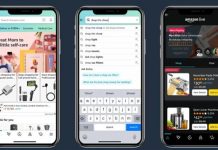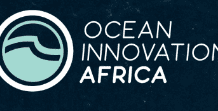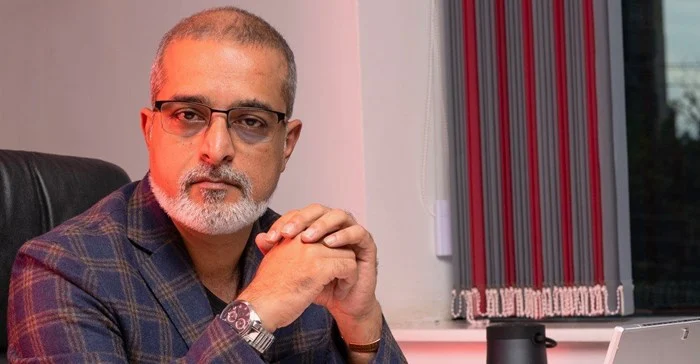In 2022, Ogilvy Africa’s Lesso Lessons campaign won a Cannes Gold Lion, four metals at the Loeries including Grand Prix and a gold, and a LIA (London International Awards) bronze – each of these are a first for any agency in East, Central and West Africa. The agency also won Africa’s only yellow pencil at 2022 D&ADs
ikas Mehta, chief executive officer, Ogilvy Africa, hopes to see more work of this calibre coming from the Continent and being recognised on the global stage.
“Lesso Lessons is an example of a collaboration of diverse entities coming together and doing something because it felt like the right thing to do. We like a collaborative advantage more than a competitive advantage, and Lesso is a great example of collaborative success between Roto Foundation, Kenya’s Ministry of Health and Ogilvy Africa,” explains Mehta.
Not just a flash in the pan
“Our biggest priority, and something that keeps us awake at night, is what if this were just a flash in the pan?” he says.
“We would like to see a scenario three years down the line where many pieces of work from more countries and more agencies across Africa shine at global award shows.”
For him being a global network in Africa comes with the responsibility of putting Africa on the world map. He says they would love to see work that’s good enough to compete with the best in the world, coming from African countries you didn’t expect.
“We’ve seen this evolution in Asia and Latin America in the past and their rising share of excellence. The world is not going to do it for Africa. We need more of Africa to come to the party and do work like (and better than) Lesso Lessons again and again.”
A functional network
“In Africa the canvas is very wide because the Anglophone, Francophone and Lusophone Africa are poles apart. And yet, despite being a continent of 54 countries, most of the creative excellence stems from a few places like Egypt and South Africa. At least historically.”
He adds that different countries are also in different development cycles which impacts the kind of work clients expect from their agency.
“When you look at countries such as South Africa, there is over half a century of history with this industry that exists. However, at times, history can also become baggage. The opportunity to leapfrog and create innovations exists in some of the lesser-known countries because they do not have the burden of years of baggage. It will take many brave clients and agencies to drive it simultaneously.”
Chasing true North
Their aim is, to give their clients and employees the same expertise and experience they would expect out of Ogilvy anywhere in the world.
“It is a lot easier said than done, but that’s our true North at Ogilvy Africa,” he says.
He explains that the Ogilvy Africa network manages sub–Saharan Africa. “That is everything beneath North Africa, starting with West African countries such as Ghana and Nigeria, and it goes as far south as Zambia and Zimbabwe, in effect giving the agency network 39 functional dots on the continent’s map.
“We structure ourselves around the East and Central African region managed through Kenya, and the West African region managed through Ghana.
“I wish I could say that competencies are the same across all 39 countries, but it’s a functional network that actually works, enabled through enough lines of collaboration between the hubs and the countries.”
He adds that they are excited about scaling competencies in influence, technology, content, and data. “When it comes to mass media advertising, the calibre of work continues to get a lot better.”
A model for other parts of the world
So why did this particular campaign resonate so clearly with juries from across the globe?
Simple, says Mehta. “This campaign is essentially a human impact story. The universal appeal of human impact stories often resonates well with audiences and juries alike.
“Even if you removed the context of Kenya, where this was designed to work; and look at most of the developing and emerging world, issues such as nutrition need to be solved.
“I believe this campaign framework could possibly serve as a model to solve similar problems in other parts of the world, provided it’s i
8 tools to create a winning customer experience strategy in 2023
Customer experience used to be a major differentiator between customers but is now essentially a matter of survival.
Aside from the fact that almost 90% of organisations now claim to compete primarily on customer experience, things have seldom been tougher for the customers they create products and services for (unless they happen to cater to the one percent). All around the world, inflation and soaring energy prices have put consumers under incredible financial pressure.
As such, most people are looking for expenses to cut back. And if your organisation doesn’t provide the kind of great customer experience that makes people feel valued, and which engenders trust and loyalty, they will go somewhere else. While that’s especially true for purchases, often seen to be grudge purchases, such as insurance, every sector will feel the impact in the coming months.
It’s therefore critical that you put the right customer experience strategy in place. While the exact details of what that strategy looks like will vary from organisation to organisation, there are several common pillars that should form the basis of any winning customer experience strategy.
- Have a customer experience goal
On its own, the term customer experience can feel quite nebulous. Obviously, you want your customers to have the best possible experience but you also need to define more specific goals when it comes to customer experience.
Ask yourself whether you’re most concerned with boosting customer retention, engagement, loyalty, or any other measure of customer engagement and build your strategy around that goal. In fact, what you might find is that you may have concerns around all the phases of your customer lifecycle. And for this, focusing on the entire journey might be your primary goal.
- Examine your new and potential customer’s online behaviour and feedback
You can’t build a good customer experience if you don’t know your customers and how they interact with your organisation. It’s therefore critical that your organisation use the most relevant available listening tools – including surveys, emails, and social media messages – to better understand them and get the feedback you need to build the best customer experience possible.
- Encourage interaction with your brand during, rather than at the end of, the customer experience journey
If you’re only proactively interacting with customers once they’ve made a purchase, you’re not providing the optimal experience. For everyone who successfully makes a purchase, you’re potentially missing out on dozens of others who (for various reasons) abandon their journeys part of the way through. If you interact with and help customers at every step of the journey, through tools like chatbots or WhatsApp messaging services, you’ll demonstrate far more effectively that you care about their wants and needs.
- Add in customer engagement tools
Did you know that some of the biggest customer engagement wins can be automated? Using digital communication tools such as SMS, email, chat and in-app messaging, you can increase your organisation’s direct communication with customers without dramatically increasing in-house resources.
- Personalisation is no longer a nice to have – its a must
Nobody likes to feel like they’re just another faceless customer, especially if they’ve bought products or services from the same company for years. Think back to your school days. Imagine if you’d put your hand up to answer a question in the third term and the teacher you’d had all year said something like, “yes, you”. Imagine how you’d feel.
If you’re sending out generic messages and offers to your customers without giving any sense that you actually understand who they are and what their history with your organisation is, then you’re going to struggle to build the kind of customer experience that engenders retention, loyalty, or any of the other goals you’ve set out for your organisation.
- Get comfortable with analysing customer data
Of course, you’re going to struggle to achieve that kind of personalisation without having and, more importantly, understanding customer data. Every organisation should have the ability to analyse customer data and that should apply across the entire organisation.
It’s not always possible for this capacity to be built up immediately. In those instances, organisations can work with partners that understand how to do it and help them build up metrics that matter and help drive customer engagement
- Add in experience enhancements
A great customer experience today, may not even be a good one tomorrow. As such, organisations should constantly look to find ways to enhance their customer experience. Enhancements such as personalised video, digital signatures, VOC forms, and new surveys can go a long way when it comes to helping organisations build experiences that allow them to stand out from the competition.
- Outsource managed services where need be
As important as it is for organisations to build up their customer experience capabilities, they still need to focus on the business of doing business. If you’re a retailer, for example, you shouldn’t also have to be a media company or a reporting and analytics company.
By outsourcing some managed service functions, your organisation can focus on what it’s actually good at while allowing the experts to help you build a great customer experience.
Consistent efforts required
While focusing on the above pillars can go a long way in helping your organisation build a winning customer experience, it’s also important to remember that it isn’t a once-and-done kind of thing. Instead, it’s critical to put in consistent efforts and ensure that your customer experience is always evolving into the best possible iteration of itself.













































